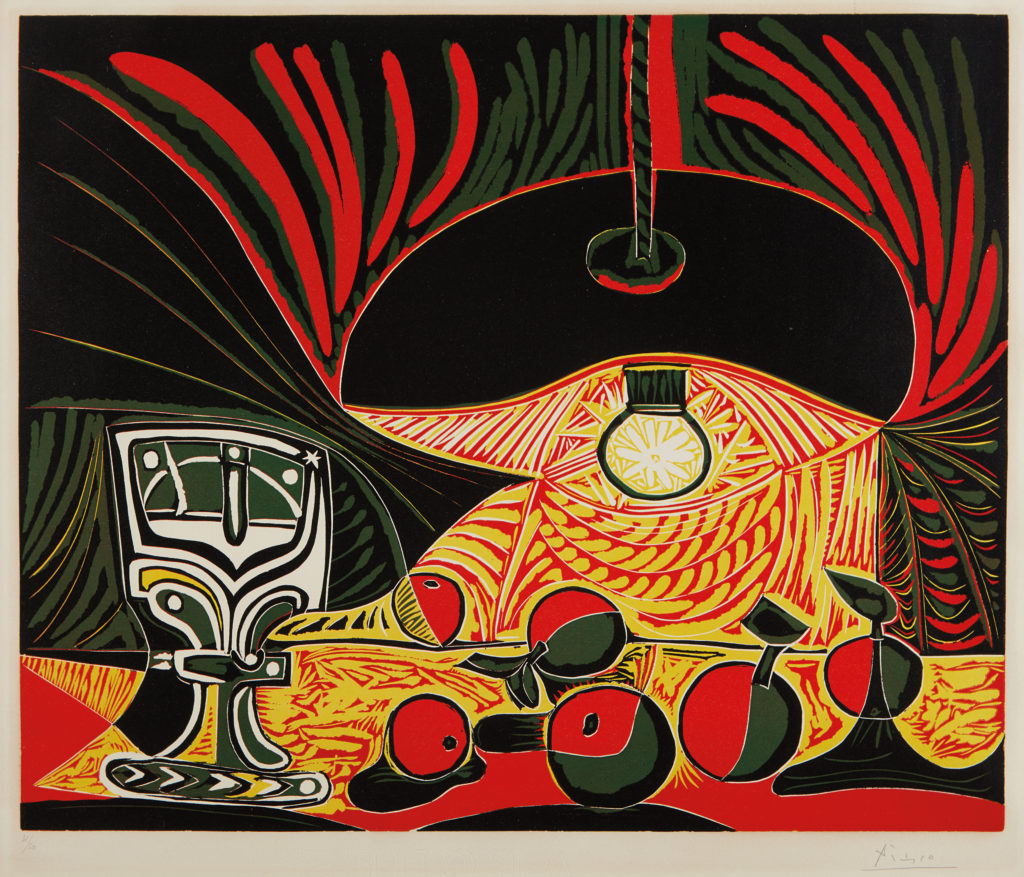
Partner Content
Why Prints and Editions Prints Are Leading the Art Market’s Shift to Online Auctions
New artnet Auctions specialist Jannah Greenblatt explains how changes in buyer behavior and advances in technology are creating a sea change in the field.

The auction world has long lagged behind other sectors in the shift to digital. But given collectors’ increasing confidence in online bidding, combined with rising costs associated with the brick-and-mortar model, traditional auction houses are investing in rapidly developing their online capabilities—at the same time that more online-only auction platforms are emerging to join the fray. As these changes are taking place, prints and multiples are emerging as collecting categories that are particularly well positioned to thrive.
Historically speaking, the art market has always been built upon human relationships, with buyers and sellers coming together to view artworks in person. The traditional auction season is shaped around these in-person encounters, clustering sales with extended-viewing exhibitions to attract the collectors and dealers who converge in New York or London for the market festivities. But just as people are streaming TV rather than planning their viewing time around regularly scheduled programing, art collectors are looking to find new, high-speed ways to acquire work that are more convenient than the traditional model.
Online auctions make this easy. The efficiency of digital-image sharing allows sellers to submit their artworks online, and lets specialists share visuals of a work’s condition and details of signatures to collectors around the world instantly. Online-only platforms are capable of significant reach, too—for example, artnet receives 3.7 million visits per month, with subscribers and bidders from over 235 countries and territories. Collectors are able—and eager—to bid 24 hours a day, from any time zone, whenever they have a free moment.
Entirely digital auction platforms like artnet Auctions are capitalizing on the these advantages. There is now a continual stream of auctions available at all times—with most sales limited to a digestible size of 25 to 75 lots—meaning that consigners don’t have to wait for a designated week in the traditional auction calendar, and are instead able to put up artworks and sell them within days or weeks of submission. Also, because online houses are able to lower operational costs, fees and commissions are streamlined, resulting in better deals for both buyers and sellers. Bidding is immediate, and payment is faster.
Online auction houses host and administer their own online sales, which are fully virtual throughout the sale process but still entail the same rigorous standards upheld by brick-and-mortar sellers. In the digital model, specialist expertise is used to vet sellers and artworks prior to sale by examining photos in dialogue with the consigner of the artwork, confirming that details are consistent with other examples, researching in catalogue raisonnés, confirming provenance, and liaising with experts in the field.
Prints in particular are appealing to new collectors, who are more comfortable experimenting due to the lower prices and the fact that you can acquire examples by established names like Picasso, Warhol, Haring, and Banksy. Because the works are not unique, prints are sold at lower prices, which in turn opens up the number of collectors for whom these works are accessible. Original editioned artworks like screenprints or lithographs by leading artists can be purchased for far less than an artist’s unique artworks—in the $2,000 to $500,000, say, range rather than $500,000 to $50 million (or more) range for paintings by the same artist. With prints published in editions of 10 to 1,000, buyers are likely familiar with other examples from the edition—some of which are represented in major museum collections—so there are fewer surprises.
This generational shift to online is apparent across all industries. Many young people have never hailed a cab by raising their hand on the street, or ordered takeout over the phone. Shopping for this demographic is naturally facilitated through digital means, including when it comes to works of art. This younger generation is tech-savvy but new to art collecting, educating themselves by navigating through the art world online through portals like Instagram and artnet. Resources like artnet’s renowned Price Database, which lists all available auction results from public auctions, empower collectors to search and compare recent auction history, giving them a sense of confidence when purchasing. Print raisonnés, many of them online—like the Sol LeWitt print raisonne compiled by Barbara Krakow Gallery, or the archive of prints published by Gemini G.E.L. at the National Gallery of Art website—allow collectors to verify the dimensions and edition information without leaving their computers.
Once informed, collectors new and experienced alike are increasingly confident in bidding and buying online, even for relatively higher priced works. After investing in its ability to support live auctions with digital services, including by posting condition reports online and offering in-house online bidding, the Phillips auction house managed in 2017 to sell the Picasso linocut Nature morte au verre sous la lampe (Still Life with Glass under the Lamp) for $250,000 to an online bidder. artnet Auctions has experienced a similar uptick in business over the past year, with three times more sales above $75,000 in 2017 versus the prior year.
The auctioning of prints and multiples online is clearly an emerging marketplace with enormous potential. As collectors and consigners acclimate to this shifting environment, improvements are constantly being made to the technology while record-setting prices continue to be achieved. With young collectors rising to become the new establishment, it’s not inconceivable that online will someday in the not-too-distant future surpass the live sale as the preferred method for auctioning art. If the increasingly sparse salesrooms at live auctions are any indicator, the transitional moment is already coming to pass.
*****
Jannah Greenblatt, a veteran of the brick and mortar auction houses Christie’s and Phillips, is senior specialist in prints and multiples at artnet Auctions.

artnet Auctions’s Jannah Greenblatt
Follow artnet News on Facebook:
Want to stay ahead of the art world? Subscribe to our newsletter to get the breaking news, eye-opening interviews, and incisive critical takes that drive the conversation forward.
SHARE



